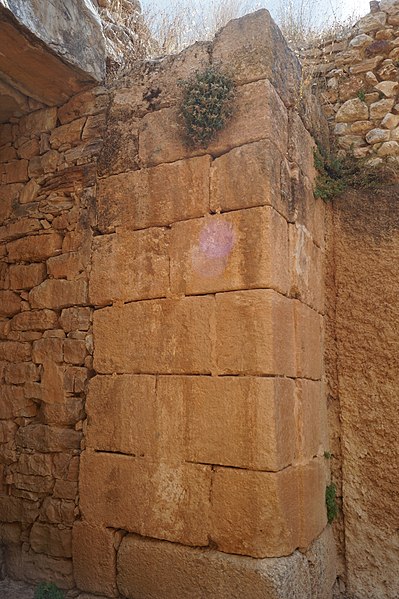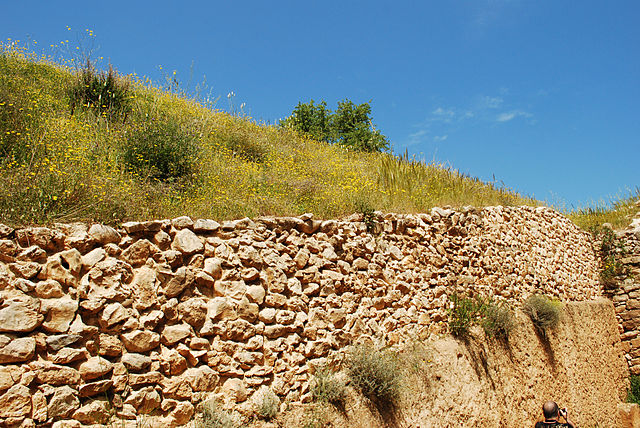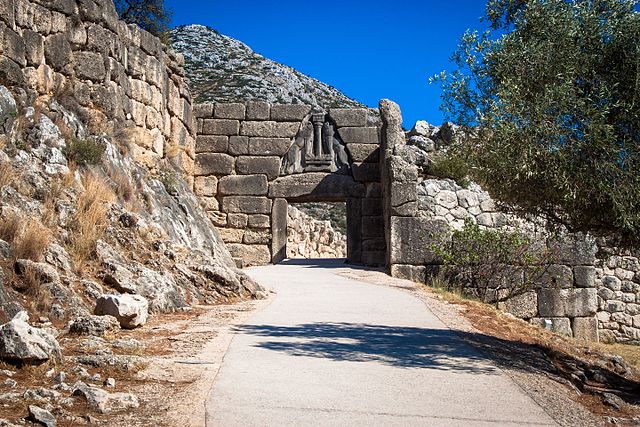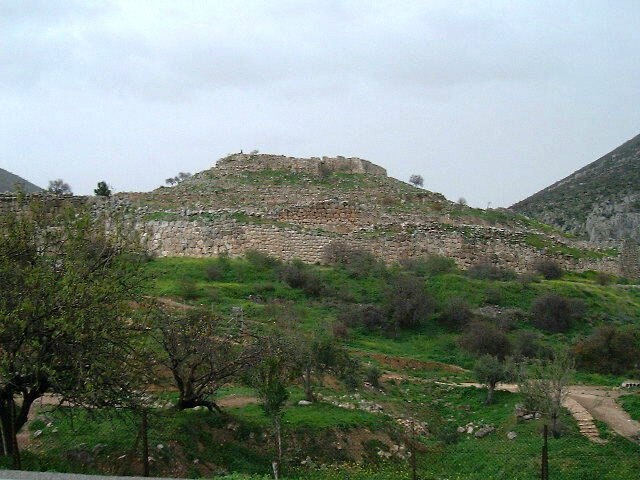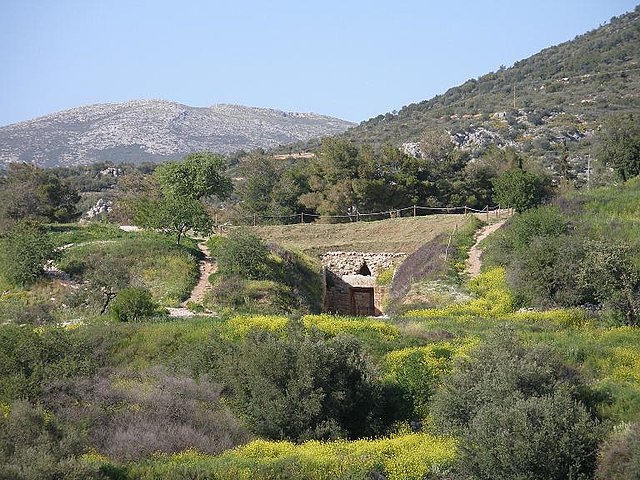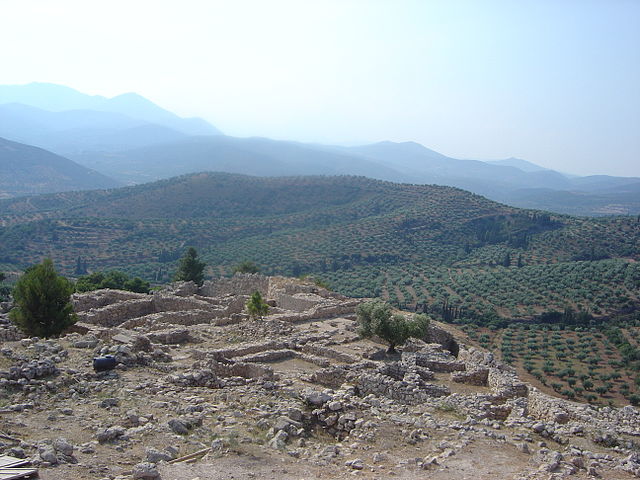The Tomb of Aegisthus is a Mycenaean tholos tomb located near the citadel of Mycenae, Greece. It was constructed in the Late Helladic IIA period, approximately 1510–1450 BCE, and rediscovered in the 19th century. It was first excavated by Winifred Lamb in 1922, as part of a project led by Alan Wace.
The façade of the Tomb of Aegisthus, showing the small relieving triangle above the lintel.
Part of the façade of the stomion, showing clearly the ashlar-masonry façade built in front of the rubble one.
View looking over the Tomb of Aegisthus, down the dromos. The small relieving triangle is just visible over the inner lintel.
View of the inner wall of the dromos, showing the use of rubble masonry to line it.
Mycenae is an archaeological site near Mykines in Argolis, north-eastern Peloponnese, Greece. It is located about 120 kilometres south-west of Athens; 11 kilometres north of Argos; and 48 kilometres south of Corinth. The site is 19 kilometres inland from the Saronic Gulf and built upon a hill rising 900 feet above sea level.
The Lion Gate and example of Cyclopean masonry at Mycenae
A view of the citadel.
The Tomb of Aegisthus outside the walls of the citadel.
View from the acropolis, or high city.


